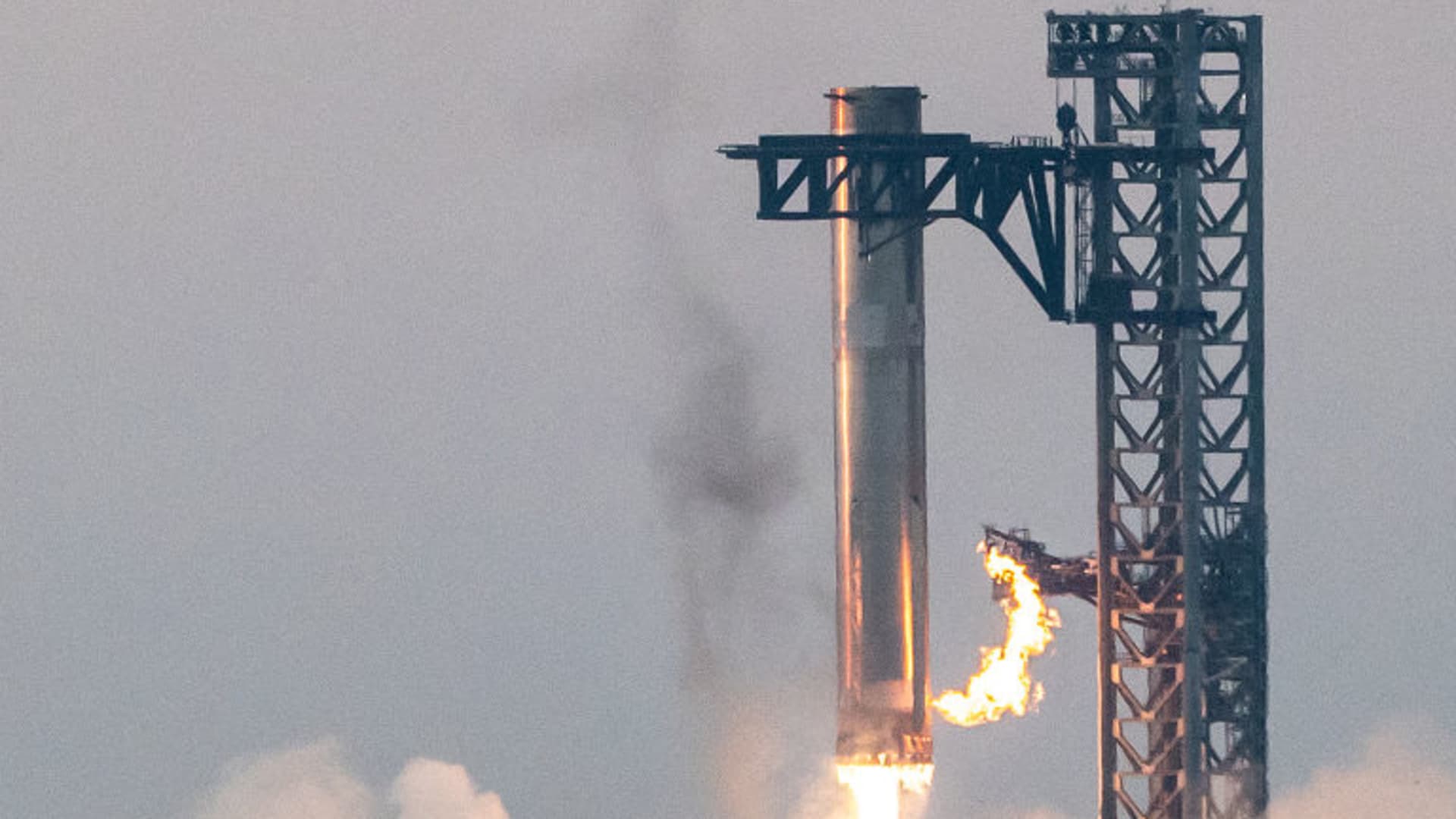SpaceX launched its fifth test flight of its Starship rocket on Sunday and made a dramatic first catch of the rocket’s more than 20-story tall booster.
The achievement marks a major milestone toward SpaceX’s goal of making Starship a fully reusable rocket system.
Elon Musk’s company launched Starship at 8:25 a.m. ET from its Starbase facility near Brownsville, Texas. The rocket’s “Super Heavy” booster returned to land on the arms of the company’s launch tower nearly seven minutes after launch.
“Are you kidding me?” SpaceX communications manager Dan Huot said on the company’s webcast.
“What we just saw, that looked like magic,” Huot added.
NASA Administrator Bill Nelson congratulated SpaceX in a post on social media.
“As we prepare to go back to the Moon under Artemis, continued testing will prepare us for the bold missions that lie ahead,” Nelson wrote.
Starship separated and continued on to space, traveling halfway around the Earth before reentering the atmosphere and splashing down in the Indian Ocean as intended to complete the test.
There were no people on board the fifth Starship flight. The company’s leadership has said SpaceX expects to fly hundreds of Starship missions before the rocket launches with any crew.
The full Starship system has flown four spaceflight tests previously, with launches in April and November of last year, as well as this March and June. Each of the test flights have achieved more milestones than the last.
SpaceX emphasizes that it tries to build “on what we’ve learned from previous flights” in its approach to developing the massive rocket.
The Starship system is designed to be fully reusable and aims to become a new method of flying cargo and people beyond Earth. The rocket is also critical to NASA’s plan to return astronauts to the moon. SpaceX won a multibillion-dollar contract from the agency to use Starship as a crewed lunar lander as part of NASA’s Artemis moon program.
The Federal Aviation Administration issued SpaceX with a license to launch Starship’s fifth flight on Saturday, sooner than the regulator previously estimated. But the company wanted to launch the fifth flight earlier than October, leading both SpaceX and Musk to be vocally critical of the FAA, saying that “superfluous environmental analysis” was holding up the process.
While the FAA and partner agencies at the U.S. Fish and Wildlife Service and the Commerce Department’s National Marine Fisheries Service conducted assessments more quickly than anticipated, SpaceX has also had to pay fines to environmental regulators regarding unauthorized water discharges at its Texas launch site.
Goals for fifth flight
With the booster catch, SpaceX has surpassed the fourth test flight’s milestones.
The company completed its goal of returning the booster back to the launch site and used the “chopstick” arms on the tower to catch the vehicle. The company sees the ambitious catch approach as critical to its goal of making the rocket fully reusable.
“SpaceX engineers have spent years preparing and months testing for the booster catch attempt, with technicians pouring tens of thousands of hours into building the infrastructure to maximize our chances for success,” the company wrote on its website.
The catch requires thousands of criteria to be met, the company said. If it hadn’t been ready, the booster would have diverted from the return trajectory to instead splash down off the coast in the Gulf of Mexico.
“We accept no compromises when it comes to ensuring the safety of the public and our team, and the return will only be attempted if conditions are right,” SpaceX said.
The rocket
Starship is both the tallest and most powerful rocket ever launched. Fully stacked on the Super Heavy booster, Starship stands 397 feet tall and is about 30 feet in diameter.
The Super Heavy booster, which stands 232 feet tall, is what begins the rocket’s journey to space. At its base are 33 Raptor engines, which together produce 16.7 million pounds of thrust — about double the 8.8 million pounds of thrust of NASA’s Space Launch System rocket, which launched for the first time in 2022.
Starship itself, at 165 feet tall, has six Raptor engines — three for use while in the Earth’s atmosphere and three for operating in the vacuum of space.
The rocket is powered by liquid oxygen and liquid methane. The full system requires more than 10 million pounds of propellant for launch.
Read the full article here







